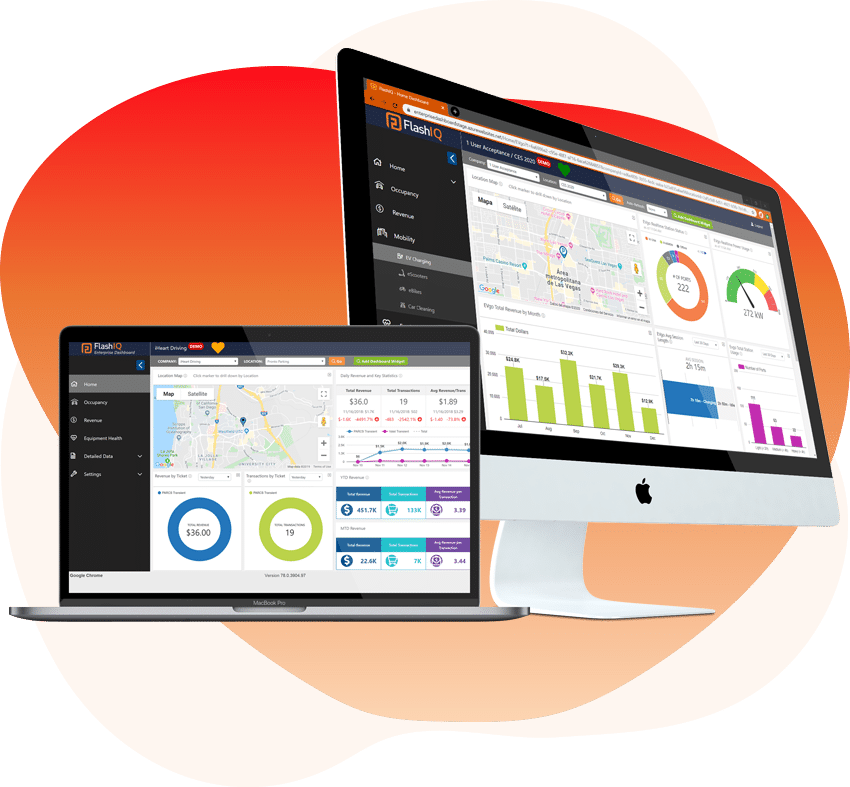Get Smart
Business intelligence was once reserved for big corporations and government organizations. Today it’s the standard for a successful business of any size.
For the parking industry that is just starting to tap into cloud-based platforms, real-time insight is foresight. Looking at last year’s data may be helpful for planning and setting goals – but the real value of the business intelligence technology we have access to today is in present and predictive modeling.
As the parking industry adapts to a more dynamic way of operating, intelligence will play a central role in responding to changes in demand. Whether garages are simply monitoring occupancy and adjusting rates accordingly or observing larger-scale shifts in consumer preferences and introducing new features, like touchless access, those data-based decisions are the only way to stay competitive in today’s markets.
Control, Diversify, Grow
At the onset of the global coronavirus pandemic, we watched from our offices – and then our dining tables –in real time as demand for parking plummeted. Occupancy approaching zero, valet stands shuttering. Devastation across an entire industry.
So now more than ever, the demand to control, diversify and grow revenue is top of mind for all parking asset owners and operators. By utilizing a real-time business intelligence engine that leverages metrics like revenue, occupancy, and equipment health, asset owners and operators can build actionable strategies for revenue growth and diversification.
You can’t control what you don’t know. Gaining insight into day-to-day operations is the first step towards preventing downtime, increasing revenues, developing efficiencies, and cutting costs. The next step is moving beyond a single source of revenue – because modern mobility is characterized by more than just cars.

New modes of transportation and micromobility are gaining popularity each day.
- Parking represents the top reason that urban ride-hailing users substitute a ride-hailing service in place of driving themselves (37%). [UC Davis Institute of Transportation Studies]
- More than twice as many trips – 84 million – were taken on shared micromobility in the U.S. as compared to the year before. 36.5 million trips were taken on station-based bike share, an increase of 9% from 2017. [National Association of City Transportation Officials]
By broadening service offerings to include these alternative modes, assets can diversify their revenue structure and improve long-term stability. Insight can inform which modes are most popular, and in turn which new ventures may be worth investing in.
Making these decisions in real time makes money. When a concert pops up down the street, you can push a rate increases in seconds. When printer paper is running low, you’re notified. And when electric vehicle charging is scarce, you become a charging destination rather than a point along the way.
How Do You Take Data to Action?
As we previously stated, real-time data is foresight, but that is only if the data is transformed into action.
With actionable insight in hand, asset owners and operators can:
- Use real-time data for real-time decisions. Take live intelligence from the cloud to the ground with dynamic digital signage to communicate occupancy and price structures to parkers.
- Go from portfolio-wide down to an individual lane. Look at market forces from a birds-eye view and customer service from a ground-level one.
- Eliminate downtime with close monitoring. Quash component issues before it occurs by consistently monitoring the health of your equipment.
- Customize data sets to optimize strategy. Predictive models for different regions or location types can create distinct strategies for success that will set your operations apart from the competition.
COVID-19 Consumer Response Driven by Data
A clear trend in consumer demand since the onset of coronavirus has been for contactless interactions. An American Express survey found that 58% of consumers familiar with contactless payment methods would be more likely to opt for one now.
Even before the pandemic, our own data showed triple digit year-over-year growth of our contactless parking solutions, like pay-to-text, LPR, Bluetooth, and mobile management app. Most Flash locations already support contactless payment options with our pay-to-text With data in hand, we set out to create a touchless alternative to tapping a button for a ticket.
Enter: FlashMotion – an integrated motion sensor that is discreetly affixed to the front of kiosks to enable users to simply wave for a ticket.
When used in conjunction with mobile payments on exit, FlashMotion enables an end-to-end touchless experience for parkers. The demand for FlashMotion was instantaneous and is already installed at over two dozen municipal and private garages with more installations lined-up.
Throughout this crisis, we have used the data readily available to us to make quick, informed decisions that set us up for success – even in trying times.
This is what a business intelligence engine does: it puts data intelligence at your fingertips to constantly keep you in the know so that when shifts in the environment do occur – you’re ready to react in real time.
Intelligence for the New Next
In the wake of the COVID-19 crisis, data intelligence will be more valuable than ever. Especially for an evolving industry like parking, in which the “way things have always been done” is not only inferior, but entirely unsustainable.
This unprecedented event exposed the faults of rigid business models that are resistant to adapting. We have all risen to meet the demand for contactless and touchless, but what about the next world-shaking event? Or even just the gradual progression of trends over time?
Regardless of what’s next, access to real-time data and actionable insights is the fastest way to accurately respond.
To learn about FlashIQ, Flash’s business intelligence engine, CLICK HERE.

